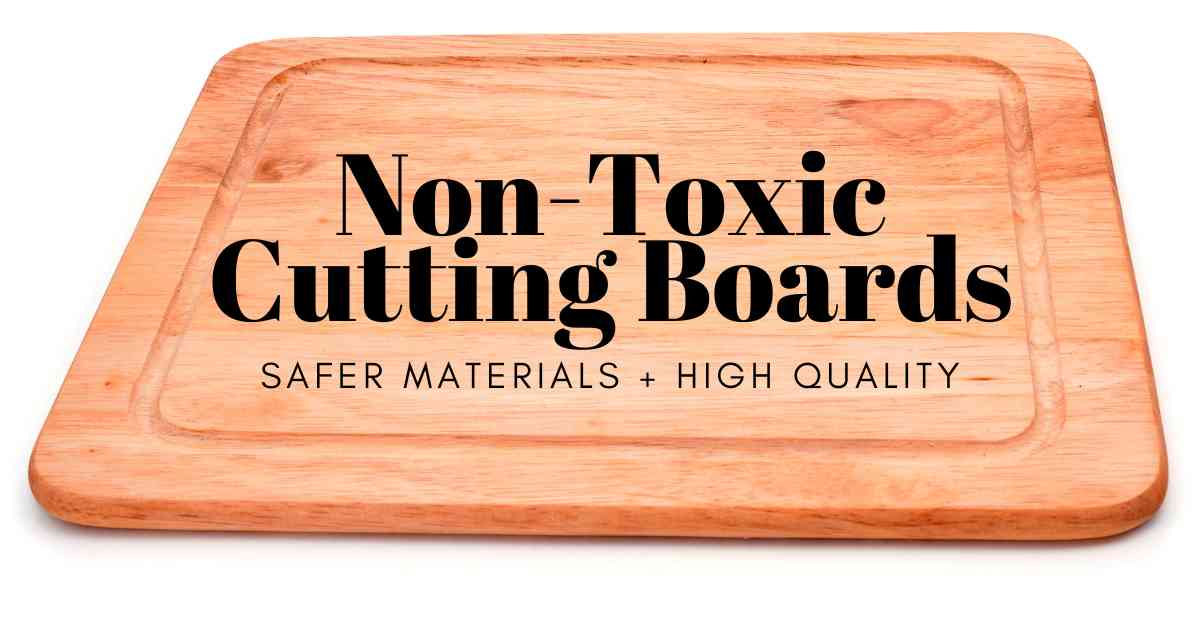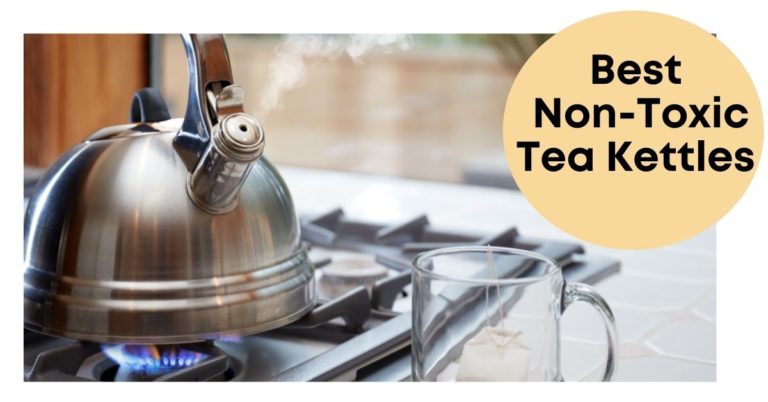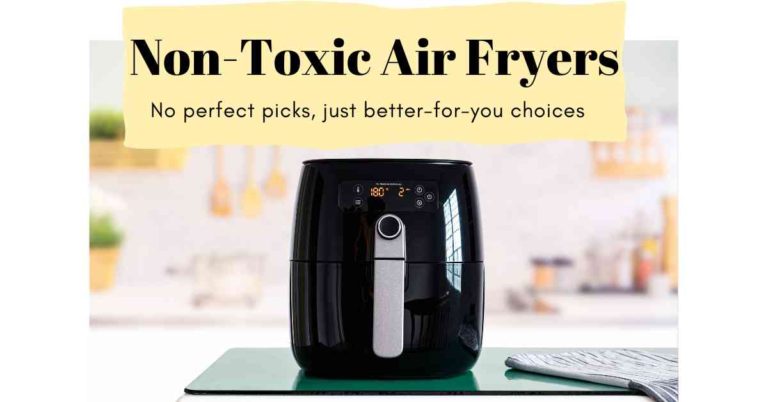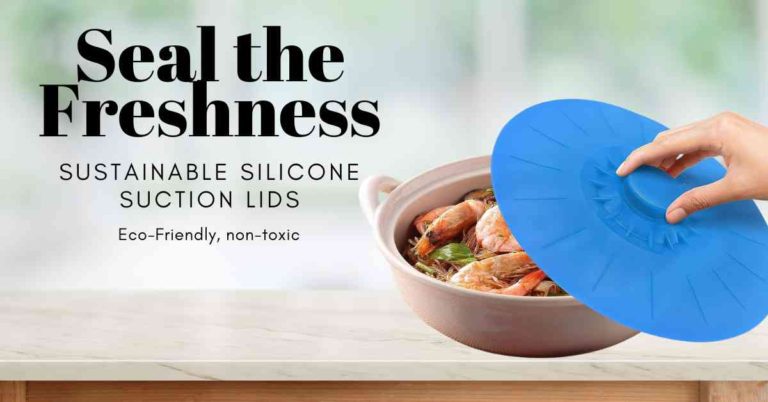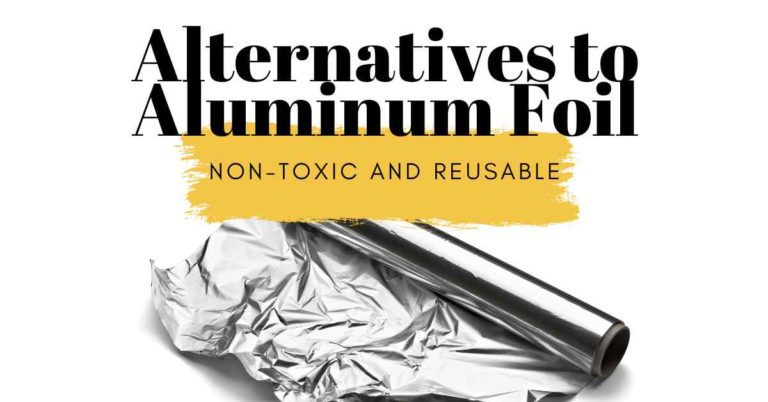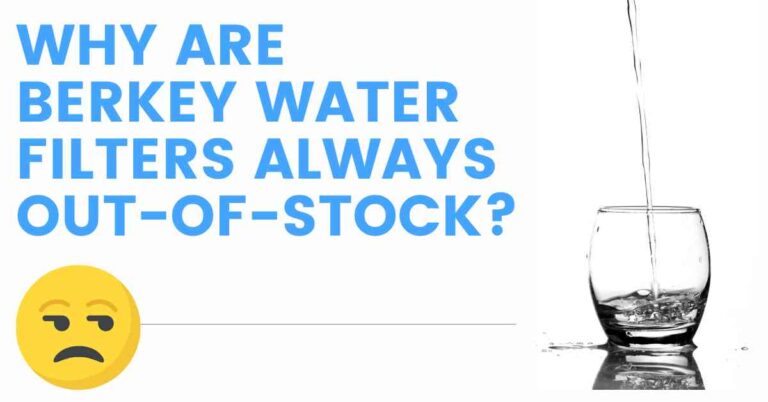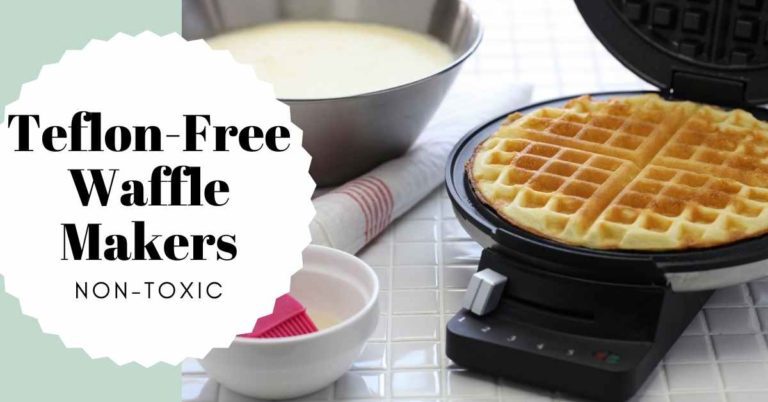Looking for a non-toxic cutting board?
When you’re in the kitchen prepping meals, having a great cutting board is essential. But why settle for one that could potentially contain questionable materials like BPA, triclosan, formaldehyde, and mineral oil. Non-toxic cutting boards like wood and bamboo are the ideal choice for any home cook looking to up their game in the kitchen. Read on to learn more about non-toxic cutting boards and how to find the perfect one for your needs. Let’s get chopping!
What’s the most important thing I learned while researching this topic?
Use TWO different cutting boards to avoid cross contamination, one for ready to eat items and one for raw meat and fish.
Cutting Board 1: Use for fruits, veggies, bread, cheese – basically things that are ready to eat.
Cutting Board 2: Use for raw fish and meat – anything that needs to be cooked to be safe to eat.
It’s important to always properly clean your cutting board after use, and you will lessen the chance of cross contamination by having two boards. That’s because whatever goes on the raw meat and fish board would need to be cooked, so if you were cutting fruit on the same board it could pick up some unwanted bacteria.
What Makes Non-Toxic Cutting Boards Different?
Non-toxic cutting boards are made from materials that are free of harmful chemicals and toxins, such as formaldehyde, BPA, Triclosan, and mineral oil. Here is why these toxic chemicals are used in many cutting board options being sold by companies:
- Formaldehyde: found in the adhesive used for composite, bamboo, and wood cutting boards. Long-term exposure to formaldehyde may cause some types of cancer.
- BPA: used in plastic cutting boards. BPA is considered an endocrine disrupting chemical that either mimics or blocks hormones and disrupts the body’s normal functioning. Researchers have linked BPA to developmental and health problems in children.
- Triclosan: added to products to make them antibacterial. Triclosan is an endocrine disrupting chemical, may affect immune responses, and cardiovascular functions.
- Mineral Oil: many wood boards are finished with mineral oil. Some call it liquid paraffin oil and it is derived from petroleum. They use food-grade oil on boards, however there aren’t many studies done on the safety. I’m going to steer clear of this oil since I use my cutting board multiple times per day. To find out more about food-grade mineral oil, check out this article.
What materials are cutting boards made from?
Cutting boards can be made from a variety of different materials including wood, bamboo, plastic, glass, and ceramic. I’ll be highlight non-toxic wood, and bamboo cutting boards since it has better for you materials and they are high-performing in the kitchen. You may be asking what about glass, ceramic, and plastic? Here are my thoughts:
- Glass and Ceramic: These options are the least porous and easy to clean to keep bacteria away HOWEVER it will dull your knives very quickly and are prone to have the knife slip while cutting (at least in my experience!) For these reasons I would avoid, however they would be great for kneading bread, or rolling out cookie dough.
- Plastic: When the knife leaves cuts in the board then bacteria may start to grow in the crevices and can become more difficult to clean out. For this reason you usually need to replace more frequently. Plastic can also contain chemicals like BPA, and triclosan so best to know what materials the plastic cutting board is made from.
Wood Cutting Boards
Wood cutting boards are typically made from maple, beech, and walnut – these are the most recommended woods for cutting boards. Reference this article to find out which type of wood cutting board is right for you. Basic jist is hard maple and beech have smaller pores so better at blocking bacteria, moisture, and stains when compared to walnut. However walnut doesn’t show stains as much and is more unlikely to dull knives.
Wood cutting board pros:
- Durable: Wood has different hardness levels and the harder options will leave less knife marks on the board and make a great choice for everyday use in the kitchen.
- Easier on Knives: Wood can be more forgiving with your knives when compared to bamboo, glass, or some plastic boards.
- Anti-bacterial properties: Studies show that “fewer bacteria were generally recovered from wooden blocks than from plastic blocks.”. This is because the blocks absorbs bacteria and can kill them after 3 to 10 minutes. Exception is if there was a substance like chicken fat coating the surface, this would need to be properly cleaned. Always properly clean your cutting board after every use.
- Easy to clean: Wood cutting boards are relatively easy to clean and care for, typically requiring only a mild soap or detergent and some gentle scrubbing.
- Aesthetics: Many wood cutting boards come in attractive designs and styles, making them a great choice for decorating your kitchen as well as using for food prep.
Wood Cutting Board Cons:
- Stains: Wood cutting boards may be more prone to staining and scratches than other materials, which may affect their appearance over time.
- Hand wash only: To properly maintain you should handwash, and not use the dishwasher since it could warp or crack your board.
- Heavy: Tends to be on the heavier side
- More Expensive: More expensive then other cutting board options
- Adhesives: Adhesives could contain formaldehyde
- Maintenance: Needs to be oiled on a regular basis to keep board from cracking, splintering, and absorbing moisture.
If you want to know even more about wood cutting boards like end-grain vs edge grain, and open and closed grains then check out this great reference: https://www.bobvila.com/articles/best-wood-for-cutting-board/
Bamboo cutting board pros:
- Sustainable: Bamboo is a renewable resource and one reason for this is because it comes from a fast growing grass. Bamboo plant can reach maturity and be ready to harvest in 2 years, and once harvested can regenerate. However trees can take decades to grow (20+years) before being ready for harvest
- Cheaper: Bamboo cutting boards are cheaper than wood cutting boards
- Durable: It’s a harder surface and does a good job hiding knife marks
- Lightweight: These cutting boards are much lighter when compared to wood
Bamboo Cutting Board Cons
- Adhesives: Adhesives could contain formaldehyde
- Hardness: Will dull your knives quicker than wood
- Maintenance: Needs to be oiled on a regular basis to keep board from to keep your board from cracking, splintering, and absorbing moisture.
What about Epicurean Cutting Boards?
Before my last purchase of a bamboo cutting board, I was using Epicurean. I really liked it because it was lightweight, inexpensive, looks great, and easy to clean. Like most products that come in contact with food, I looked in to the materials being used before I made a purchase and decided to not purchase again. Here is what I found out so you can make your own decision if you like these boards:
Materials Used for Epicurean Cutting Boards:
I asked their customer service and here is their response on what materials are used in the cutting boards:
“The raw material we us for our cutting boards and kitchen tools is made by Richlite, which does hold GreenGaurd Certification. We use the raw material by the sheet and cut it into the products we make. The boards on an item number are also approved by the National Sanitary Foundation that certifies product and safety with food contact.”
Adhesive Used for Epicurean Cutting Boards:
Then I asked what is used to glue the wood sheets together and noted I’m seeing some people call out formaldehyde and wanted to know if that was accurate. Here is their response:
“The material is made from many layers of high-quality custom craft paper. The rolls of paper are infused with a resin before being cut to length and laid by hand. Each sheet is carefully stacked, alternating the direction of the paper, to achieve the ultimate balance and stability. The stacks are pressed under even heat and pressure, bonding the layers of paper together and curing the product. The sheets are then slowly cooled to produce a solid, stable food-safe sheet material called Richlite.
The resin is called phenol-formaldehyde. The formaldehyde concern in products is what is called urea-formaldehyde. Urea-formaldehyde is banned in building products in areas such as California. Our material is urea-formaldehyde free. Our material does not have glues or any other additives than the phenol-formaldehyde resin. Our material is also BPA free.”
I decided to not purchase again and look for alternatives that did not use phenol-formaldehyde.
Non-Toxic Cutting Boards
This post contains affiliate links, which means I receive a small commission, at no extra cost to you, if you make a purchase using this link. Please see my disclaimer for more details. Your purchase helps support my work in bringing you information about non-toxic living.
Here are some great options if you are looking for non-toxic cutting boards, recommendations include wood and bamboo cutting boards and avoid the unwanted materials like BPA, triclosan, formaldehyde, and mineral oil.
Virginia Boys Cutting Boards
Here are some features about Virginia Boys cutting boards:

- Materials: 100% sustainable walnut wood and state from start to finish they use 100% clean food-safe materials. I reached out to ask what kind of adhesive glue they used and here is their response “We use water-soluble, food-safe glue, and all our boards are treated with coconut oil.”
- Finish: “Each board is pre-seasoned with a proprietary blend of pure fractionated coconut oil, giving you a cutting surface free of any unnatural ingredients so you can use right after you receive it!”
- Made in USA
- Giving Back: With every purchase they plant a tree!
- Guarantee: They include a100% money back guarantee
Hard Maple Treeboard Cutting Boards
Here are some features about Hard Maple Treeboard cutting boards:
- Solid wood: What I love the most about this company is they create their cutting boards with solid pieces of wood. That means they don’t need to use adhesives to glue slabs of wood together.
- Materials: The edge grain boards they offer are hard maple. Go here to read more about grain types. They also offer maple cutting boards but multiple sources say to avoid as a cutting board material because they soak in moisture however the finishes they use are meant to keep liquids from absorbing (see next bullet).
- Finishes: “They’re hand finished with organic raw linseed oil and our own board balm. To help resist moisture, our boards are finished first with food-grade raw linseed oil and then our proprietary board balm, a 100% plant-based and organic mixture of linseed oil and carnauba wax (no petroleum, mineral or animal products).”
- Silicone feet: Optional feature to add to the board
- Made in USA
Greener Chef Organic Bamboo Cutting Board

Here are some features about the Greener Chef cutting board:
- Material: Organic Bamboo
- Adhesive: Formaldehyde free
- Life Guarantee: I have this cutting board and what I love is they have a Life Guarantee where they state “We’re so confident in our 14.5″ x 11.5” wood cutting board, that we will replace your chopping board from cracking, splintering and separating every time. for life!
Final Thoughts
Choosing the right cutting board for your kitchen is an important decision and there are plenty of materials to choose from. If you’re looking for a non-toxic cutting board, then wood or bamboo may be the right choice for you. When selecting a cutting board, you should consider factors such as design, durability, maintenance requirements and budget to decide which is best for your kitchen. Ultimately, the right choice will depend on your own personal preference and needs.
No matter what type of cutting board you choose, it is important to properly maintain your board in order to ensure its longevity and cleanliness. With proper care and maintenance a good quality cutting board can provide years of use and help make meal prep tasks more enjoyable!
Cheers!
Brekke

